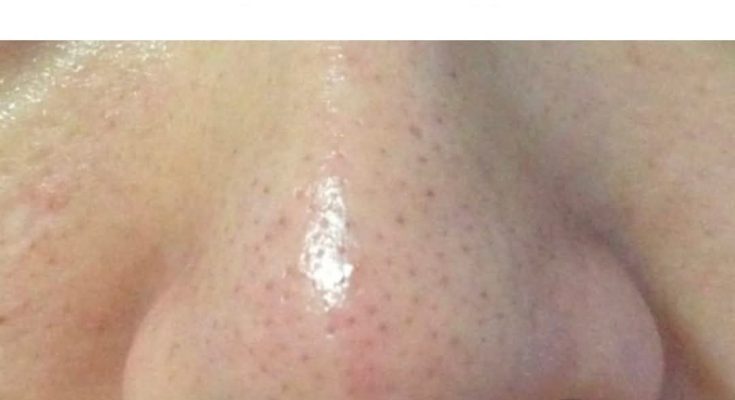It can show pigment variations around the eyes, appear puffy or wrinkled, or have freckles, beauty marks, and bumps. All of this is completely natural. However, some skin issues, like persistent acne or extreme dryness, may signal underlying health concerns.
Unfortunately, society’s obsession with smooth, poreless skin has made it easy to confuse normal features with problematic ones. Take sebaceous filaments, for instance. Though often mistaken for blackheads, they actually play an important role in keeping your skin healthy.
What Are Sebaceous Filaments, Exactly?
You may notice tiny dots—especially on your nose, forehead, chin, and cheeks. But before you assume they’re clogged pores or blackheads, take a closer look. These are likely sebaceous filaments, tiny tube-like structures inside your pores. And no—they’re not meant to be squeezed out.
“Sebaceous filaments may resemble blackheads, but they’re generally lighter in color—gray or tan—and serve a key function,” explains Dr. Dendy Engelman, a board-certified dermatologist in New York City. “They help transport oil from the sebaceous glands to the skin’s surface, keeping your complexion hydrated and protected.”
Sebaceous Filaments vs. Blackheads
Despite how similar they may look, they’re not the same. “Pimples, including whiteheads and blackheads, result from bacteria or fungus and usually form raised bumps,” says Dr. Purvisha Patel, another board-certified dermatologist. “Sebaceous filaments, however, are simply made of oil and keratin and contain no bacteria. They’re harmless and completely natural.”
While they may not be visually appealing to everyone, they’re not a cause for concern like chronic acne might be.
Who Has Them? Pretty Much Everyone
Sebaceous filaments are universal, but they’re more noticeable in some people. Genetics, age, and skin type all play a role. People with thicker hair follicles or oilier skin tend to have more visible filaments. Puberty can make them more prominent, and as we age and skin begins to sag, enlarged pores can highlight them further.
According to the Cleveland Clinic, skin care habits matter, too. Over-washing or sun damage can dry out your skin, causing sebaceous glands to ramp up oil production—and in turn, make filaments appear larger.
Should You Try to Remove Them?
You’ve likely seen viral videos showing people squeezing out sebaceous filaments. While oddly satisfying to watch, experts strongly advise against mimicking them. These filaments are vital for skin lubrication and won’t stay gone for long—your pores will fill back up with sebum within a few weeks.
Instead, use gentle cleansers that help reduce pore size. While these won’t eliminate filaments, they can make them less visible.
The Risk of Damaging Your Skin
Trying to forcefully extract sebaceous filaments can do more harm than good. “Applying too much pressure can damage the skin’s surface, leading to scabbing, infection, or even long-term scarring,” warns Dr. Joshua Zeichner, a New York-based dermatologist. Other risks include inflammation, hyperpigmentation, and breakouts. If you’re truly concerned about your skin’s appearance, consult a dermatologist.
What’s the Deal With ‘Skin Gritting’?
A trendy skincare routine called “skin gritting” has made the rounds on social media, promising to purge filaments from your pores. The technique involves layering products—oil cleansers, acid exfoliants, clay masks, and facial massages—but experts are skeptical.
“While the combination can help remove surface buildup, most of what you’re extracting is likely just leftover product,” says Dr. Engelman. Over time, this aggressive routine can actually make pores appear larger and skin look looser.
How to Care for Skin With Sebaceous Filaments
The truth is, sebaceous filaments are normal—and you don’t need to “fix” them. Instead of chasing the illusion of flawless skin, aim for healthy skin.
Use skincare products that include alpha hydroxy acids (AHAs), retinol, salicylic acid, sulfur, vitamin E, and oil-absorbing clays. Avoid pore-clogging ingredients like petroleum, shea butter, coconut oil, and even some essential oils like tea tree.
Finally, keep your skincare routine simple and consistent. More isn’t always better—introduce new products slowly to see how your skin reacts.



